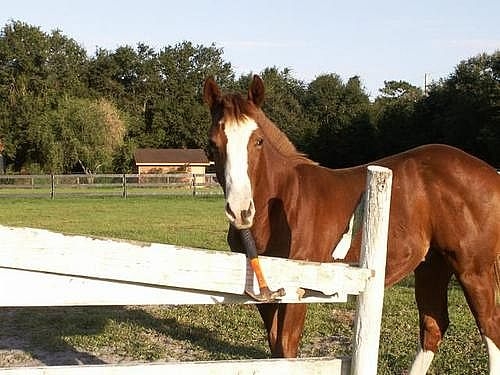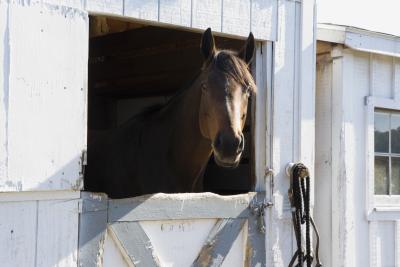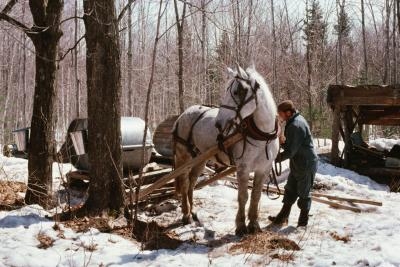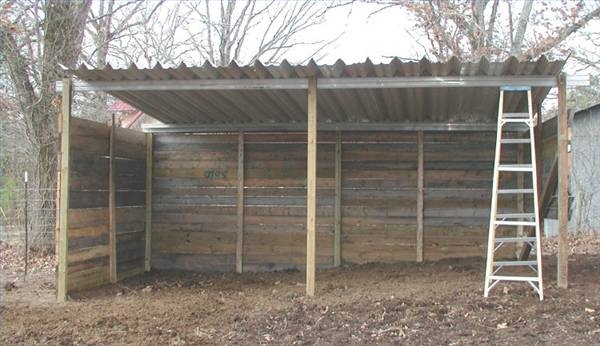
How to Build Horse Fences. Keeping in livestock can be a real challenge: even more so with horses. Why? Because they're darn clever! What you need is a sturdy, durable way to keep them enclosed. You have three basic options, or a combination of them: Electric Fencing and Traditional Wood Fencing and Wire fencing. This article will explain the differences and give you an idea of what's best for your needs.

Assess your landscape: is it flat, covered in trees, full of hills? This will effect what kind of fencing you use. Assess your budget: you can build a very inexpensive electric fence but it's not going to last 20 years. Assess your skill: Anyone can install electric fencing, but it takes some skill to build a wooden fence.
Horses are hard on their fencing. They will lean on it to get a nibble at the grass on the other side of the fence (and yes it IS greener!). They will kick their feet at the base of it for the same reason. Some horses will "crib" or chew on anything wooden. Some horses are escape artists and will just go over the fence or push it to the ground. With an average weight of about 1,200 lbs, if a horse is determined, not much is going to keep them in!

Electric fencing: this consists of lightweight posts stuck in the ground (plastic or metal "t-posts), plastic grips, wire (or electric tape) and a unit that will send periodic jolts of low intensity electricity through the fence. It's pretty easy to install and can be made into a variety of shapes and moved easily. Downside? Anything and I mean ANYTHING that touches it can ground out the circuit. That means tree branches, weeds etc. It can be hard to see and people and animals sometimes walk right into the fence. Ouch!

Wood fencing: this involved setting posts and then connecting them with stringers that keep the horse in. You need to use very large posts and sink them deeply with cement. Even then, all it takes is a horse leaning against it to shift it. These fences, if properly cared for, will last a long time. They are more attractive and conform to what most people think of as "ranch" style. Some people use the plastic pvc style of fencing. I'm not a huge fan, I think they're not as sturdy and I've seen a small fire reduce them to a pile of toxic sludge.

The third option is wire fencing: this fencing makes use of heavy duty, steel fencing that comes in a big roll. You can get it from 4 to 8 feet tall. You can stretch it and attach it to t-post or wooden posts. It's incredibly versatile, lasts nearly forever and is very effective with horses.

The most effective fencing, in my opinion, is a combination. I prefer to sink large round, pressure treated posts with cement. Then secure the wire (5' minimum) on the inside of the posts using heavy staples or U nails. Why? Because if they push against it they won't pop it off and they're less likely to chew or kick the post. Another tip: don't make the wire go all the way to the ground. It'll make trimming the weeds or lawn on the other side so much easier. Lastly, mount plastic brackets and string one line of electric line at the upper portion of the fence. Now you have a sturdy, durable, fairly inexpensive fence that the horses won't go near.

 Ideas for Nice Horse Stalls
Ideas for Nice Horse Stalls
Ideas for
Ideas for Nice Horse Stalls
Ideas for Nice Horse Stalls
Ideas for
 How to Calculate How Much to Feed a Horse
How to Calculate How Much to Feed a Horse
How to Calculate How Much to Feed a Horse
How to Calculate How Much to Feed a Horse
 How to Hook Up a Horse Harness
How to Hook Up a Horse Harness
How to
How to Hook Up a Horse Harness
How to Hook Up a Horse Harness
How to
 How to Build a Single Horse Barn
How to Build a Single Horse Barn
How t
How to Build a Single Horse Barn
How to Build a Single Horse Barn
How t
 How to Break a Horse to Ride
How to Break a Horse to Ride
How to Br
How to Break a Horse to Ride
How to Break a Horse to Ride
How to Br
Copyright © 2005-2016 Pet Information All Rights Reserved
Contact us: www162date@outlook.com